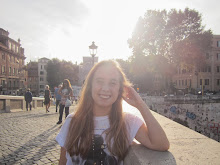
"Halloween dates all the way back to the ancient Celtic festival of Samhain 2,000 years ago in what is now Ireland, the United Kingdom and Northern France. They celebrated New Year in November on the 1st. it marked the end of summer and harvesting and the beginning of the dark, cold winter, a time of year that was often associated with death. Celts believed that on the night before the New Year, the boundary between the living and the dead became blurred. On the night of October 31, they celebrated Samhain, when it was believed that the ghosts of the dead returned to earth. They caused trouble and damaged crops, Celts also thought that the presence of the spirits made it easier for the Druids, or Celtic priests, to make predictions about the future. The people depended on the spirit world for these predictions; they were an important source of comfort and direction during the long, dark winter.
To celebrate the event, they would build bonfires and gather around them. During the celebration, the Celts wore costumes, mainly consisting of animal heads and skins, and attempted to tell each other their fortunes.
By 43 A.D., Romans had conquered the most of the Celtic territory. For over four hundred years that they ruled the Celtic lands, two of the roman festivals were combined with the traditional Celtic celebration of Samhain. The first was Feralia, a day in late October when the Romans remembered the passing of the dead. The second was a day to honor Pomona, the Roman goddess of fruit and trees. The symbol of Pomona is the apple and the incorporation of this celebration into Samhain probably explains the tradition of "bobbing" for apples that is sometimes done today on Halloween.
By the 800s, the influence of the Christians had spread into the Celtic’s lands. In the 7th century, Pope Boniface IV designated November 1 as All Saints' Day, a time to honor saints and martyrs. It is widely believed today that the pope was attempting to replace the Celtic festival of the dead, with a church-sanctioned holiday. The celebration was also called All-hallows or All-hallowmas and the night before it, the night of Samhain, began to be called All-hallows Eve and, eventually, Halloween. Even later, in 1000 A.D., the church would make November 2 All Souls' Day, a day to honor the dead. It was celebrated similarly to Samhain, with big bonfires, parades, and dressing up in costumes as saints, angels, and devils. Together, the three celebrations, the eve of All Saints', All Saints', and All Souls', were called Hallowmas."
So, I was watching the history channel, like I always do, and I saw this little advertizement in the bottom right hand corner that said to go to history.com to watch history about halloween. I got the idea to watch it, take notes, and make it my blog. To watch it yourself click here or here.

Thats interesting, I never knew that. I see you did your research.
ReplyDelete